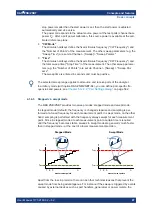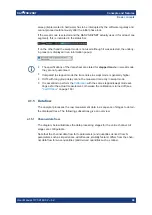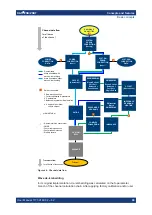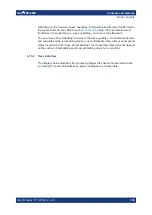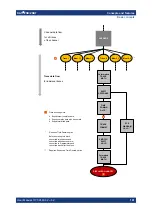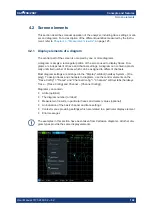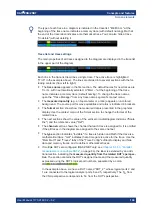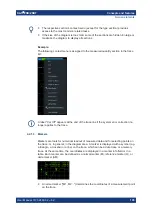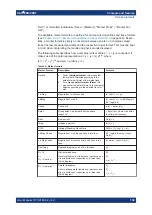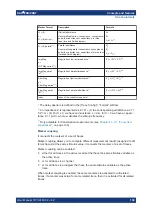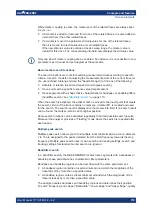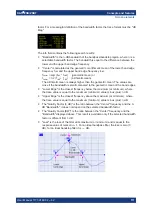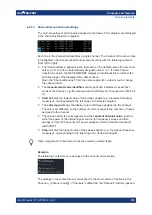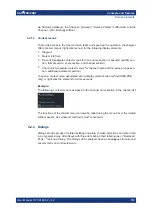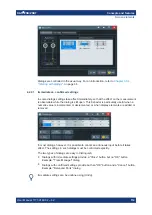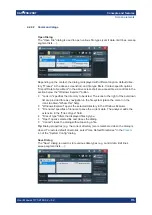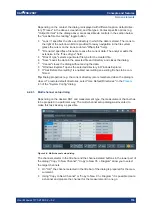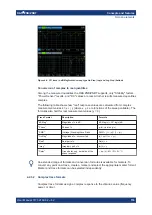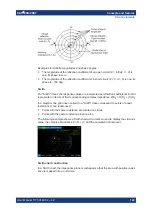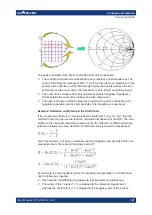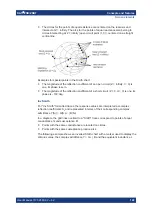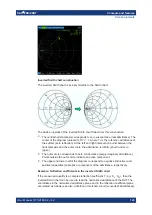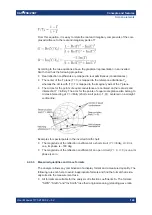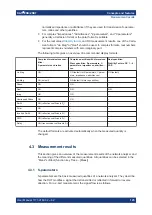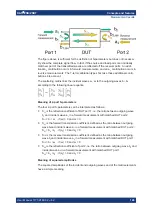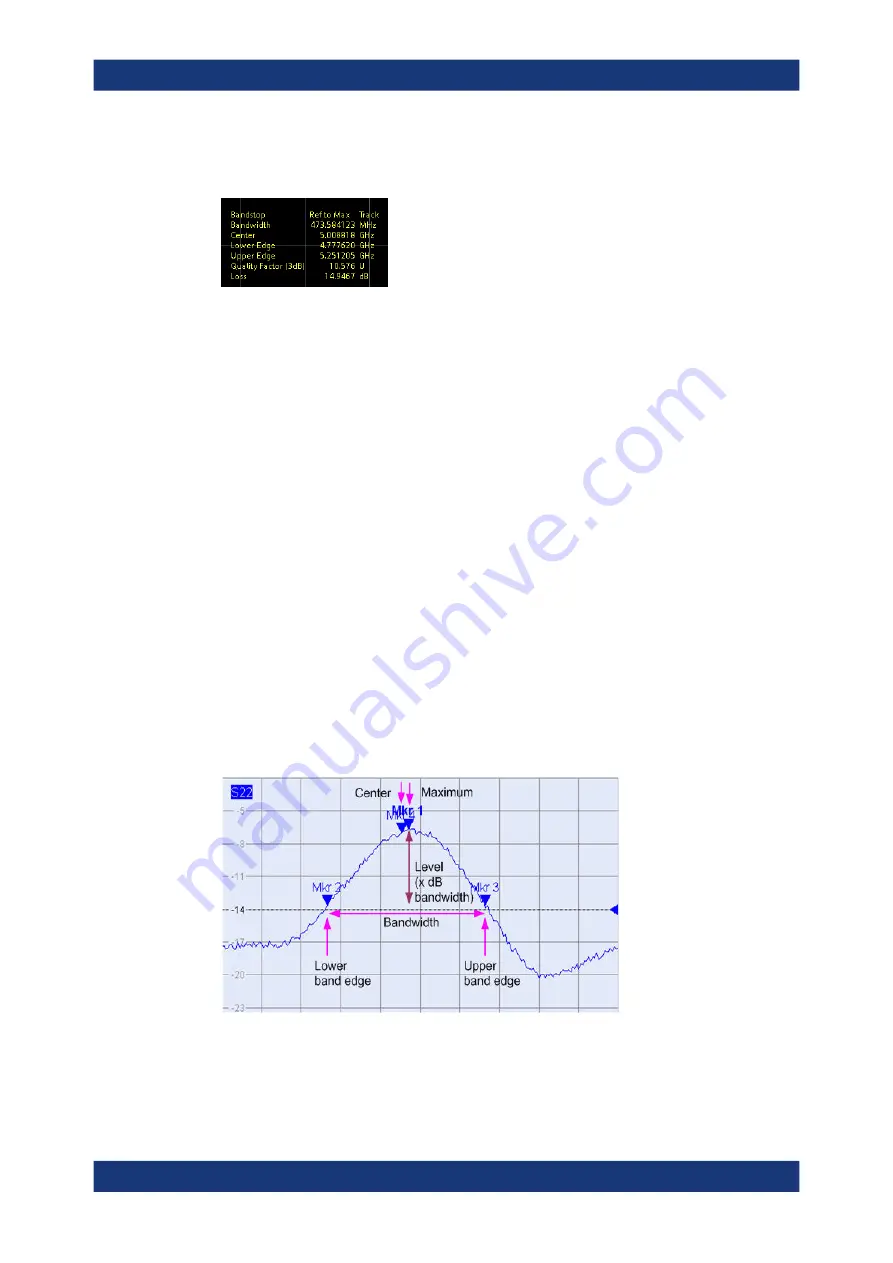
Concepts and features
R&S
®
ZNB/ZNBT
111
User Manual 1173.9163.02 ─ 62
factor. For a meaningful definition of the bandwidth factor, the trace format must be "dB
Mag".
The info field contains the following search results:
●
"Bandwidth" is the n-dB bandwidth of the bandpass/bandstop region, where n is a
selectable bandwidth factor. The bandwidth is equal to the difference between the
lower and the upper band edge frequency.
●
"Center" is calculated as the geometric or arithmetic mean of the lower band edge
frequency f
LBE
and the upper band edge frequency f
UBE
:
f
Center
= sqrt (f
LBE
* f
UBE
)
(geometric mean) or
f
Center
= 1/2 (f
LBE
+ f
UBE
)
(arithmetic mean)
The arithmetic mean is always higher than the geometric mean. The values are
close if the bandwidth is small compared to the geometric mean of the band edges.
●
"Lower Edge" is the closest frequency below the maximum (or minimum), where
the trace value is equal to the maximum (minimum) value minus (plus) n dB.
●
"Upper Edge" is the closest frequency above the maximum (or minimum), where
the trace value is equal to the maximum (minimum) value minus (plus) n dB.
●
The "Quality Factor (3 dB)" is the ratio between the "Center" frequency and the 3-
dB "Bandwidth"; it does not depend on the selected bandwidth factor.
●
The "Quality Factor (BW)" is the ratio between the "Center" frequency and the
"Bandwidth" displayed above. This result is available only if the selected bandwidth
factor is different from 3 dB.
●
"Loss" is the loss of the filter at its maximum (or minimum) and is equal to the
response value of marker no. 1. For an ideal bandpass filter, the loss is zero (0
dB), for an ideal bandstop filter it is –
∞
dB.
Screen elements

